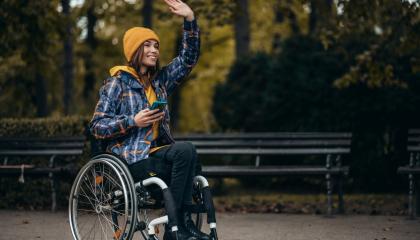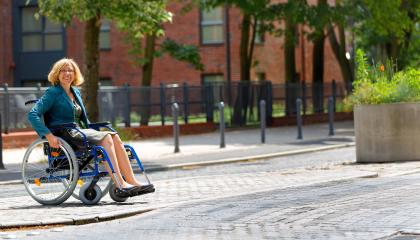Supporting disabled employees goes beyond hiring in the workplace. Focusing on accessibility in physical and remote workplaces, offering various accommodations, and emphasizing respect help create a welcoming and inclusive environment. To improve your company's Diversity, Equity, and Inclusion (DEI), you could focus on understanding disability inclusion and supporting employees with disabilities.
The fitness benefits of a good bike ride (both physical and mental) are well known. People with physical challenges or disabilities have found that riding trails is a great way to stay fit and boost mood.
Discrimination, stigma, and stereotyping are just some of the challenges that disabled people face every single day. Beyond this viewpoint problem that society has, individuals with disabilities often struggle with a built environment that excludes them from everyday activities. So, don't you think it's high time that we change our lens on disability?
To transform into an all-inclusive society, we need to address the barriers faced by individuals with disabilities. The change will come only when we work hand in hand with the disabled community to break down these hurdles.
A workplace benefits from a diverse team because different experiences and backgrounds can provide new ideas, optimized processes, and more inclusivity.
The meaning of ‘diversity’ may vary for different individuals. It’s important to consider the fact that diversity is not confined to race, sexual orientation, and gender.
The meaning of true diversity stretches far beyond these classifications. Still, while planning their diversity strategies, employers tend to overlook people with disabilities. This results in an inaccessible workplace for such individuals.
The best way to interact with people who have disabilities is to see them the way they see themselves, which can definitely be a challenge as we exist in our own minds. Take cues from the person with disabilities. If they demonstrate a high level of independence, then don’t try to do things for them or “baby” them in any way.
If a person with disabilities requests assistance, then help. In either case, you allow them to showcase how they wish to be treated.
Here are some simple yet effective ways to empower those with disabilities.
It’s generally well accepted that biking is better for the environment since it produces no pollution and consumes no fossil fuels. However, many people choose not to bike, citing safety as a top concern. Bike lanes provide a solution for safety-minded bikers, creating an opportunity for more biking with added safety and specific routes.
Traveling with a disability comes with unique opportunities and challenges, often requiring more research to find the best disability travel tips. No one should have to stay home due to a permanent or temporary condition. In fact, accessible travel is on the rise.
The travel industry offers more services and accommodations than ever before to individuals with impairments. With the internet on hand, individuals with disabilities often travel and share their own tips for getting around and exploring the world.
While it’s clear that COVID-19 has changed life as we know it, it’s unclear just how much it’s impacting certain demographics, such as individuals with disabilities. Initial research reveals that the pandemic has increased psychological distress across the board. Physical distancing and economical impacts have their own consequences, but marginalized populations such as individuals with disabilities have even less access to supportive networks and resources.
While cities get a bad rap for the strain that they place on the environment, it’s cities that are the solution to climate change. Historically, cities are hubs for trade, culture, innovation, and commerce. But when it comes to climate change, cities not only contribute the most to the negative effects of global warming, but they also deal with the day-to-day effects, including extreme heat, sunny day flooding, and more.
Forming ideas about how other people live is a common problem, and individuals who live with a disability often face a number of myths about disabilities. These misconceptions come from a variety of places, whether through stereotypes or misinformation. Many disability myths are rooted in a misunderstanding about what it’s like to live with a disability.
To help diminish the ongoing stigma, stereotypes, and myths that people with disabilities face, it’s crucial that society does work to debunk common disability myths.
Connect with us
We pride ourselves on our customer service, and we'd love to hear from you! Sign up for our newsletter to keep up with industry updates and trends, as well as any new product releases.












